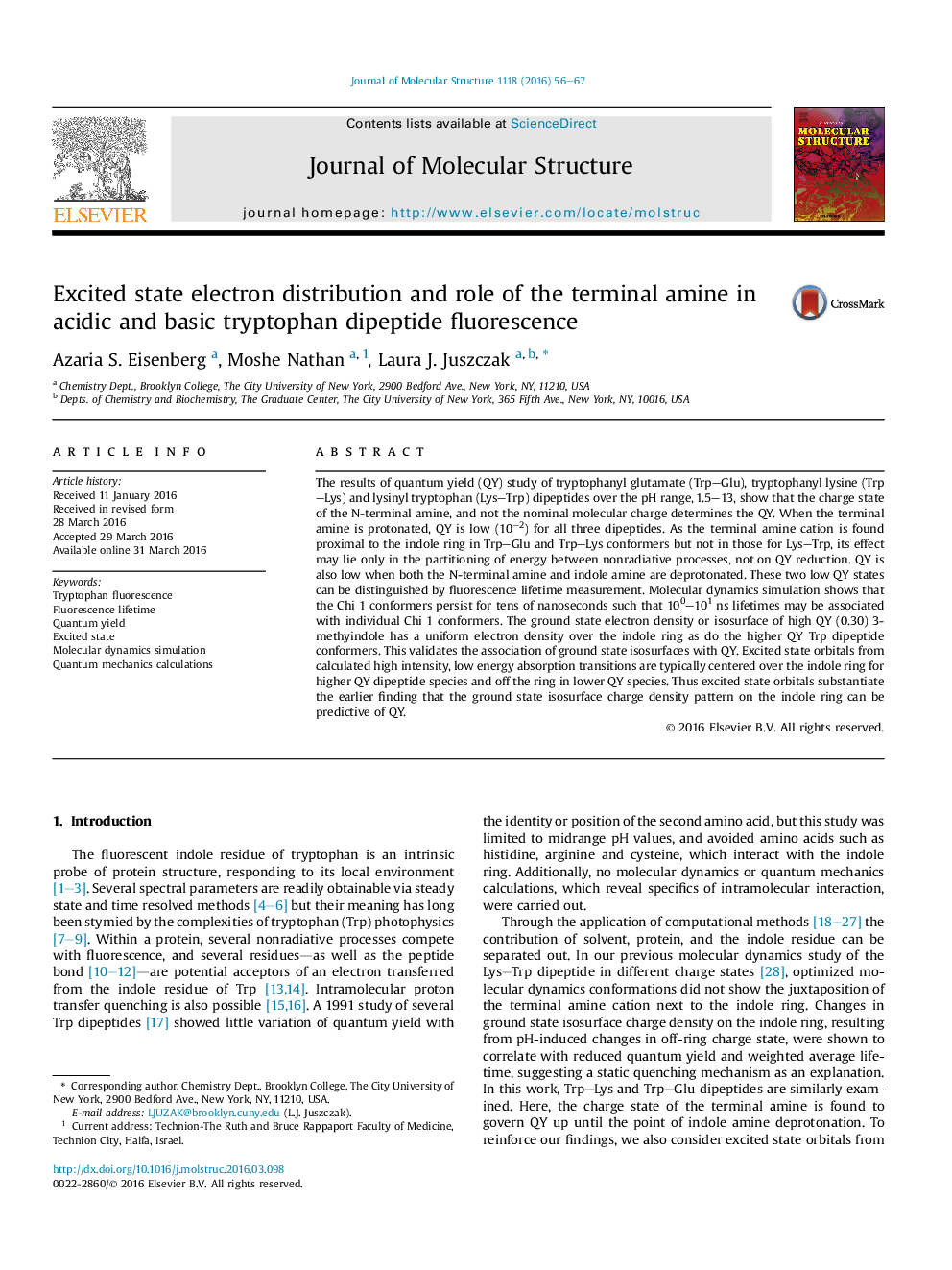| کد مقاله | کد نشریه | سال انتشار | مقاله انگلیسی | نسخه تمام متن |
|---|---|---|---|---|
| 1408791 | 1501699 | 2016 | 12 صفحه PDF | دانلود رایگان |
• Charge state of the terminal amine in Trp–Glu and Trp–Lys controls quantum yield.
• Orbital transitions show charge transfer character for low fluorescing species.
• These transitions corroborate ground state isosurface prediction of quantum yield.
The results of quantum yield (QY) study of tryptophanyl glutamate (Trp–Glu), tryptophanyl lysine (Trp–Lys) and lysinyl tryptophan (Lys–Trp) dipeptides over the pH range, 1.5–13, show that the charge state of the N-terminal amine, and not the nominal molecular charge determines the QY. When the terminal amine is protonated, QY is low (10−2) for all three dipeptides. As the terminal amine cation is found proximal to the indole ring in Trp–Glu and Trp–Lys conformers but not in those for Lys–Trp, its effect may lie only in the partitioning of energy between nonradiative processes, not on QY reduction. QY is also low when both the N-terminal amine and indole amine are deprotonated. These two low QY states can be distinguished by fluorescence lifetime measurement. Molecular dynamics simulation shows that the Chi 1 conformers persist for tens of nanoseconds such that 100–101 ns lifetimes may be associated with individual Chi 1 conformers. The ground state electron density or isosurface of high QY (0.30) 3-methyindole has a uniform electron density over the indole ring as do the higher QY Trp dipeptide conformers. This validates the association of ground state isosurfaces with QY. Excited state orbitals from calculated high intensity, low energy absorption transitions are typically centered over the indole ring for higher QY dipeptide species and off the ring in lower QY species. Thus excited state orbitals substantiate the earlier finding that the ground state isosurface charge density pattern on the indole ring can be predictive of QY.
Figure optionsDownload as PowerPoint slide
Journal: Journal of Molecular Structure - Volume 1118, 15 August 2016, Pages 56–67
